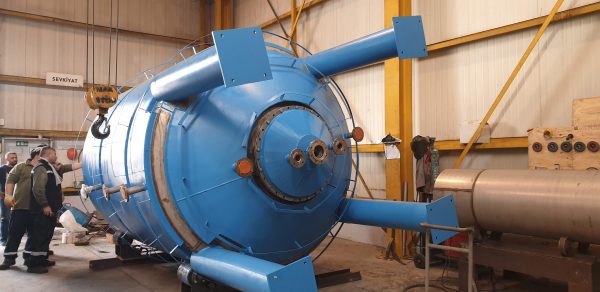The Azmet Reactor project addressed a range of engineering problems that many would have regarded as impossible. Through creativity, precise quality standards and systematic precision the project ended with a perfect success. In addition, the project creates a new standard for transporting sophisticated mining facilities to inaccessible African areas. Secondly, the innovative solutions offered significant South African originality and accuracy skills. In particular, the success of this project depended on a creative approach to work, attention to detail and perfect performance under pressure. In actual fact, the most innovative ideas epitomized South African ingenuity and precision manufacturing ability. Furthermore, the project depended on innovation, perfection in all processes of complex logistics operations. In fact, with innovative approaches and superiority in all phases, the Azmet Reactor project has established a new benchmark for engineering achievement.

Navigating Complications in the Azmet Reactor Project
The most difficult design problem was to find construction solutions for large-scale steel reactors in the Democratic Republic of Congo (DRC) interior. They were building six gigantic steel reactors in South Africa and shipping them intact over a distance of more than 2500 km. The reactors were relocated to a mine in the DRC, where they would be their final destination. Instead of onsite construction with concrete, the project team developed custom steel reactors for off-site manufacturing and delivery. Viva Engineering developed an adaptable steel design that is used for offsite construction and transport. This enables pre-assembly and adjustments that could not be achieved onsite, providing customized solutions.
The accommodation of the huge 11.6-meter height reactors also helped to extend design limits. The team incorporated merged structural support and access platforms to ensure transport stability and site flexibility. Further complicating the interior was a rubber bladder that required highly precise fittings to prevent leakage or dislodgment during transport.
Logistical Precision for Reactor Transportation in the Azmet Project
As the transporting reactor was booked months in advance, design deadlines turned into demanding manufacturing goals. The project team once more demonstrated innovative problem-solving by performing several test assembly runs to optimize construction practices. The temporary spacers allowed to unite the rubber bladders with the detailed steel forms through bolted connections.
In the DRC, quality guarantee systems were used by southern African services to match onsite. All 3,265 reactor parts arrived pre-fitted without a single misaligned bolt due to their manufacturing capability. Such precise manufacturing guaranteed the reactors had structural integrity during vibrations through thousands of kilometers in road transport.
Azmet Reactors Setting the Stage for Future Complex System Shipments
Three-storey fully compiled reactors introduced a new operational complexity. They had to maintain the winding village roads and uneven terrain. This entailed a delicate equilibrium between complicated packing and careful load constraints for the long trip to site. Loads were stabilized by specially designed transport patterns. With intentional spacing and weight distribution, the bulky components withstood every bump without failure. The logistics succeeded beautifully.
In the DRC, local teams had all parts ready for quick assembly. With the final reactor fitting snugly into position, South African engineering experience emerged as a winner through an on-time and inexpensive project. Given the mines scattered across Africa, it is clear that Azmet Reactors will not be the only complex systems to ship from success in production at home to successful installation abroad.
Conclusions
The completion of the Azmet Reactor project marks a new era for engineering in South Africa. They used the techniques of flexible design, precise manufacturing and perfect long-distance transporting and installation. The companies involved showed outstanding capabilities.
Viva engineering as the project leader, began design and logistical planning. Southern African Institute for Steel Construction (SAISC) delivered excellent services in producing the components based on specifications. The Azmet Reactor project is a starting point and guide for solving problems to ensure successful projects from production to installation.
Also Read: The Dangote Petroleum Refinery Officially Commences Production: The Largest in Africa
Also Read: Four Multi-Billion Rwandan National Roads Projects Expropriation Works to Proceed
Also Read: First Phase of Lithium Plant in Zimbabwe Successfully Concluded

